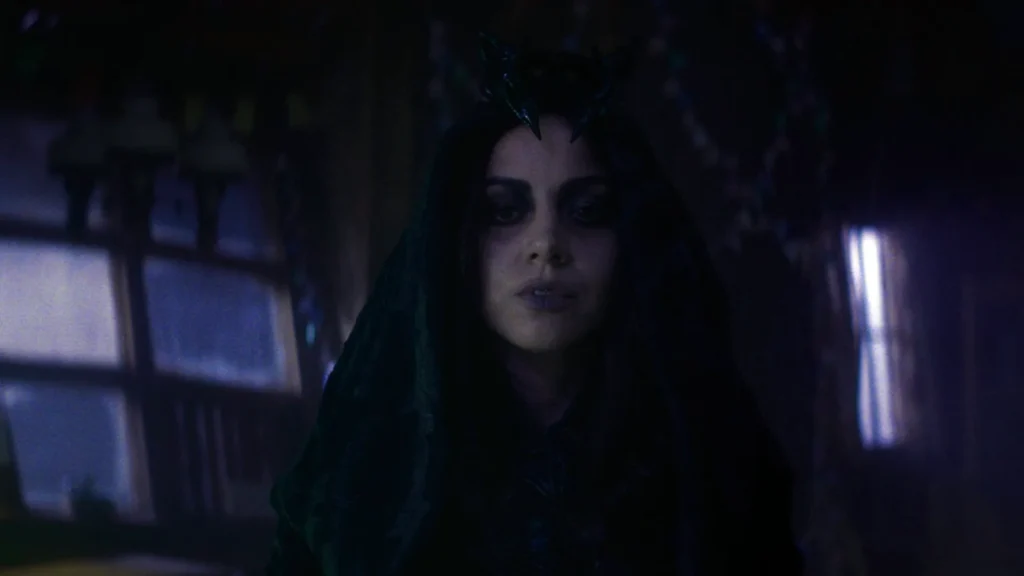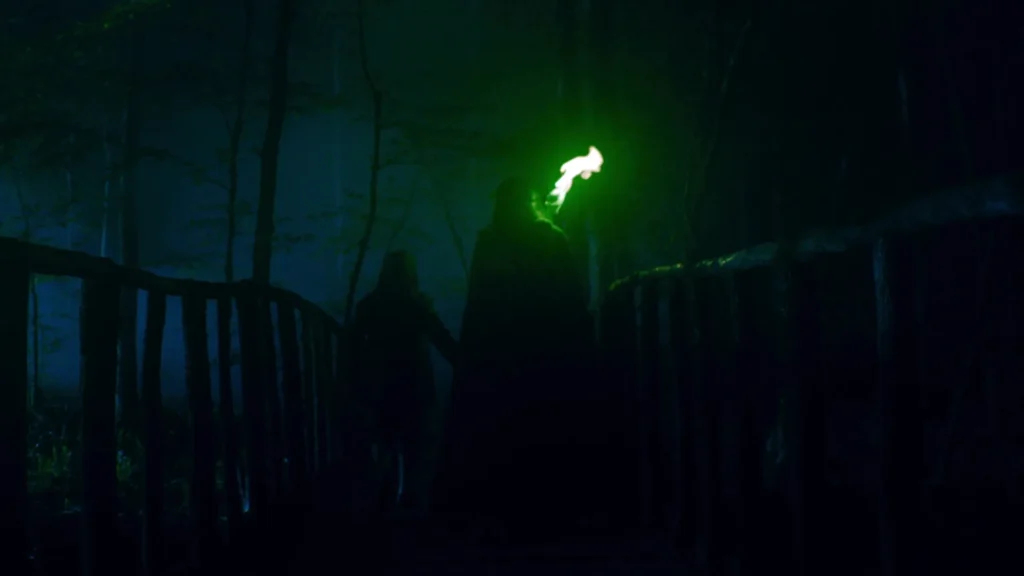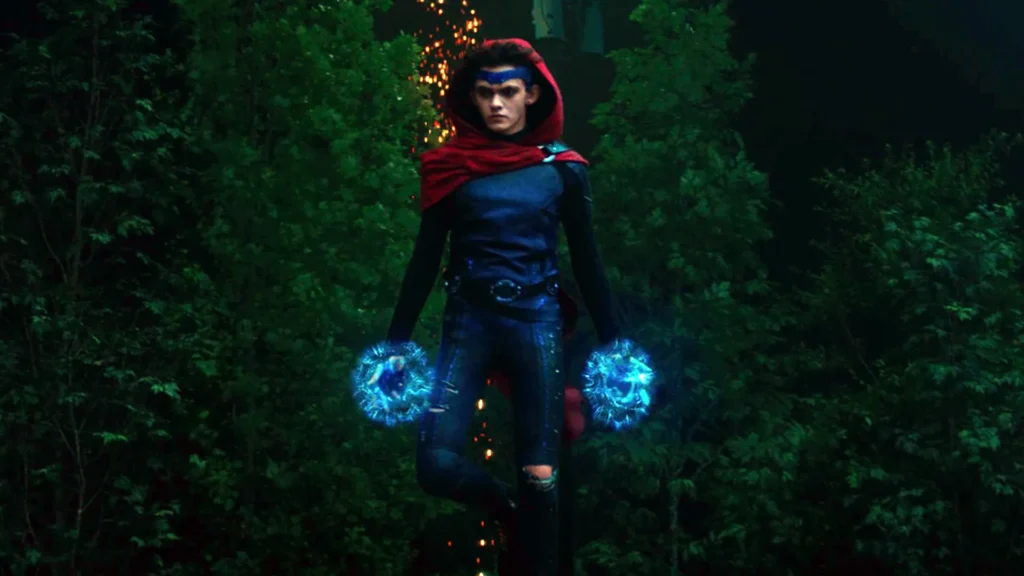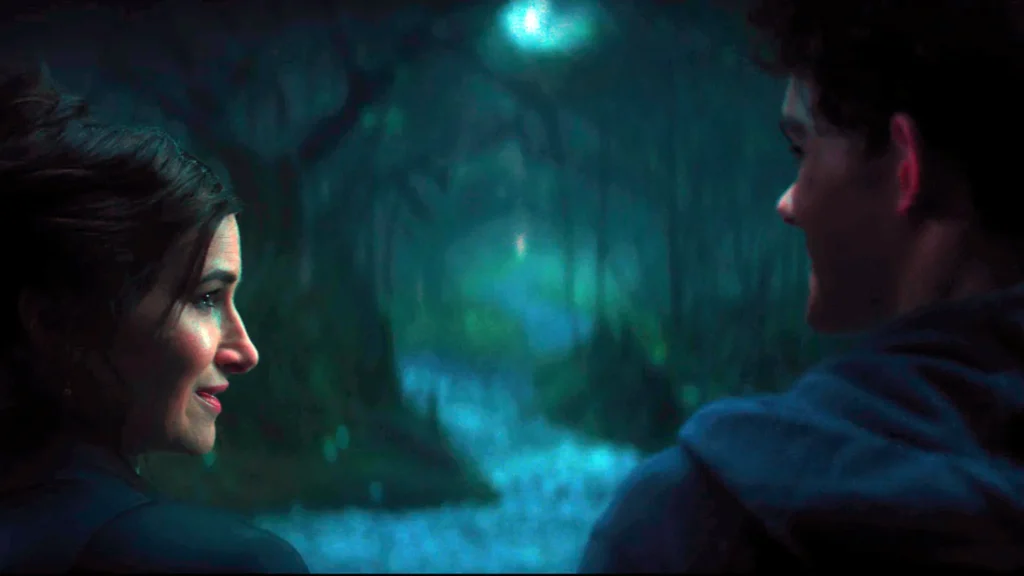The Agatha All Along series continues to captivate audiences, particularly in its climactic episodes 8 and 9, where the story takes unexpected turns, particularly surrounding the character of Billy. What began as a show focusing on Agatha Harkness evolves into a layered narrative, examining themes of manipulation, cosmic balance, and the unintended creation of a magical dimension. In episodes 8 and 9, the show unveils surprising twists that fundamentally change how we perceive the storyline, showing how Billy’s powers and Agatha’s choices intertwine to disrupt both the Witches’ Road and the cosmic order itself. Let’s dive into a detailed breakdown of these revelations and the roles they play in the finale.
A Surprising Start: Billy’s Role in the Chaos
The storyline twist that redefines episodes 8 and 9 centers on Billy, shifting the perception of the series title. While “Agatha All Along” would suggest Agatha is the sole orchestrator, it becomes clear that the show’s events and even the existence of Witches’ Road are largely influenced by Billy’s powers. His actions unsettle the cosmic balance, complicating the world Agatha inhabits. The unexpected influence Billy wields over these realms makes him the surprising architect behind the chaos, suggesting that “Billy All Along” might have been a more fitting title.
The buildup to this revelation is meticulously crafted, leading viewers to question Agatha’s intentions and Billy’s role. What initially seemed like a narrative led by Agatha’s trials and power struggles is increasingly revealed as Billy’s hidden abilities manifest in ways even he doesn’t fully understand. This unexpected shift underscores the narrative’s unpredictable nature and sets the stage for the climactic showdown in the Witches’ Road.
Episode 8 Breakdown: Alice Wu’s Death and Death’s Powers
Episode 8 opens with Alice Wu’s tragic end, continuing from her appearance in Agatha’s earlier trial. Having absorbed Alice’s powers in previous encounters, Agatha seems to be free from consequence until Death—an entity introduced with distinctive green energy signatures—makes her presence known. Interestingly, the choice to show Death’s powers in green is a departure from comic traditions, where Death’s energy is more often portrayed in shades of black, purple, or blue. This variation aligns with the unique color coding already designated to Agatha and Billy’s powers, adding a new layer to Death’s presence in the MCU.

Death’s confrontation with Agatha deepens the narrative, revealing that Billy’s existence is disturbing a “sacred balance” that Death must restore. Initially, Death explains that Billy was not meant to survive the collapse of the Hex; he was intended to disappear, yet his persistence in the realm is causing instability. Death reminds Agatha that not everyone can escape their fate, challenging her on the “special treatment” she’s seemingly received. This conversation with Death sheds light on the growing stakes and the consequences of meddling with forces beyond one’s control, setting Agatha on a path that intertwines her fate with that of her son.
Agatha’s Last Trial and Jen’s Rise to Power
Agatha, having been warned by Death, prepares for what seems to be her final trial. As she faces the impending test, she comes to an important realization: Jen, who had been a supporting figure, now holds the potential to challenge her. This trial pushes Agatha and Jen into an encounter where their abilities are fully realized. Jen takes a stand against Agatha, symbolically binding her hands and reclaiming her own powers in the process. Declaring, “You hold no power over me,” Jen successfully gains the upper hand, seizing the strength she needs to continue on her own journey. Having completed her transformation, Jen exits Witches’ Road as an empowered character, leaving Agatha to contend with her own revelations.
Following Jen’s departure, the narrative brings Billy back into focus as he and Agatha discuss the possibility of resurrecting his brother, Tommy. Agatha’s previous understanding of her powers has deepened, and she guides Billy with encouragement rather than overt magical intervention. Aware that Tommy’s essence could be restored through Billy’s efforts, she encourages him to concentrate, helping him realize his potential to bring Tommy back to life. It’s clear that Agatha comprehends the significance of Billy’s powers, especially after her encounter with Death and the explanations she received about the cosmic consequences. Agatha’s interactions with Billy reveal her underlying compassion and determination to protect him, even as she confronts the limits of her own abilities.
Death and Agatha’s Deal: Power, Sacrifice, and Manipulation
As Agatha assists Billy in his attempts to revive Tommy, she must also confront her own mortality. The locket she wears holds a piece of pollen, which she uses to escape through a fissure in the ground, attempting to evade Death once more. Her determination leads her to enlist the aid of enchanted Ants who appear in full armor and offer her their power, urging her to draw from her “core.” Although Agatha momentarily considers using this new source of magic to its fullest extent, she ultimately holds back, realizing that doing so may have unintended consequences.
This momentary power boost emboldens Agatha, leading to a dramatic confrontation with Death. Their interactions shift between conflict and something akin to a “lovers’ quarrel,” as the two spar over the fate of Billy and Agatha’s remaining lifespan. Billy, sensing Agatha’s struggle, intervenes with an offer: “Take me instead,” he says, displaying an unexpected willingness to sacrifice himself. This pivotal moment reveals the complexities of their connection, as Agatha’s agreement to the arrangement echoes her own experiences of loss and resilience. Ultimately, Death accepts Billy’s offer, reminding him of Nicholas, and Agatha steps forward to sacrifice herself to protect Billy, signifying her loyalty and love.
Billy’s Realization: Witches’ Road as His Own Creation
The storyline takes an intriguing turn when Billy returns home and starts piecing together clues within his surroundings. Noticing his room’s decor, including posters and memorabilia from shows like Buffy the Vampire Slayer and films such as The Rocky Horror Picture Show and Häxan, Billy realizes that the Witches’ Road may have been a manifestation of his own powers and imagination all along. The room’s decorations suggest that everything he saw on Witches’ Road—the trials, the costumes, the characters—were shaped by elements he’d been familiar with since childhood.

This moment of self-awareness is strikingly reminiscent of WandaVision, where Wanda constructed Westview based on the sitcoms and dramas she adored growing up in Sokovia. Billy’s realization underscores the narrative’s exploration of inherited trauma and magical potential, as he recognizes that he recreated these imaginary realms in a similar way to his mother. This revelation, woven into the themes of legacy and power, shows the uncanny similarities between Billy and Wanda, each unknowingly crafting worlds inspired by their deepest memories and influences. This surprising twist completes the emotional arc of the finale, adding depth to Billy’s character and hinting at the broader implications of his and Wanda’s intertwined fates.
Episode 9 Insights: Agatha’s Past and Nicholas Scratch’s Origin
Episode 9 delves into Agatha’s past, giving viewers a glimpse into her motivations and the origin of her son, Nicholas Scratch. This episode begins in the year 1750, where Agatha, pregnant and vulnerable, faces Death once more. The Salem Witch Trials, as shown in WandaVision, took place in 1693, meaning this event occurs 57 years later. Agatha’s plea for time with her unborn child is met with unexpected mercy from Death, who grants her “special treatment” by allowing Nicholas’s birth to proceed unimpeded. This favor ultimately seals her bond with her son, establishing her fierce commitment to his survival.
The significance of Nicholas’s last name, “Scratch,” becomes evident here, with Agatha declaring upon his birth, “No spell, no incantation, made from scratch.” Agatha’s attachment to her son drives her actions, leading her to desperate measures to ensure her and her son’s survival. Her practice of absorbing power from other witches and sacrificing coven members underscores her complex, morally ambiguous character. Each interaction with her coven members, whom she manipulates and ultimately betrays, reveals her deep-rooted instinct for self-preservation, often disguised under the guise of “special treatment” for her child.
The Greenwich Trial: Death’s Cosmic Balance and Agatha’s Choices
The Greenwich trial in episode 9 introduces a new level of challenge, where Agatha encounters witches who had previously removed their shoes out of respect for Witches’ Road. The episode highlights the cosmic role of Death in maintaining balance, and this trial emphasizes the consequences of disrupting that balance. Unlike earlier trials that presented participants with familiar, enclosed spaces, the Greenwich trial requires Agatha and other witches to confront their own mortality in a setting that demands both humility and resolve. The removal of their shoes symbolizes submission to the forces governing Witches’ Road and further establishes Death’s authority over life and power.
Agatha’s choices within the trial reveal her resourcefulness and cunning. She recognizes that Witches’ Road was never meant to exist as an independent realm, instead functioning as a complex manifestation of Billy’s imagination. Her interactions with other witches and her manipulation of Jennifer—a character whose powers she had previously bound—demonstrate Agatha’s expertise in navigating this artificial dimension. Her ultimate realization that Witches’ Road wasn’t “real” prompts her to approach her interactions with Death with calculated reserve, acknowledging that her attempts to exploit the road’s powers may come at a steep price.
Death’s Role as the Green Witch and Cosmic Balance
Death’s portrayal as a “green witch” in Agatha All Along is an intriguing choice unique to the MCU. This characterization sets her apart from comic portrayals, where Death is typically more abstract, embodying cosmic neutrality rather than individual persona traits. In the MCU’s version, however, Death is both a cosmic entity and a force of nature, aligning with the green witch archetype to represent the cycle of life and death. This interpretation emphasizes her connection to the earth and to cosmic balance, underscoring her purpose of restoring order to realms thrown into disarray by magical interference.

The role Death plays in balancing powers like those of Billy and the Scarlet Witch clarifies her relentless pursuit of Agatha and her son. In this episode, Death’s interaction with Agatha and her approach toward cosmic equilibrium take center stage. Her insistence on maintaining balance, especially after Scarlet Witch’s intervention in Billy’s life, shows that each cosmic entity in the MCU serves a defined function and purpose. This revelation ties into Agatha’s journey, highlighting the inescapable nature of fate and the consequences of disrupting established order.
Agatha’s Encounter with Death and Lilia’s Spell
When Agatha finally faces Death, her resolve is put to the test. Recalling Lilia’s final words from an earlier episode—that she must bow down when Death calls her a coward—Agatha submits, drawing upon Lilia’s advice as she confronts the ultimate force of mortality. This submission is coupled with her recitation of Jennifer’s healing spell over the water, which Jennifer had used to save Billy’s life. The sequence illustrates Agatha’s evolving understanding of power dynamics and her shifting focus from selfish gain to self-preservation for the greater good.

Just as Agatha performs the ritual, Billy arrives in his Wiccan form, restoring her powers and offering protection. This event underscores Agatha’s ability to control the extent of power she absorbs and implies that she chose to take only as much as she needed to survive rather than for dominance. Billy’s Wiccan form, while somewhat rough, represents a matured version of his abilities, showing his willingness to sacrifice himself to save Agatha—a decision that solidifies the bond between them. This moment captures Agatha’s influence on Billy and highlights her role as both protector and manipulator, blurring the lines between her loyalty and her cunning.
Revealing Witches’ Road: A Manifestation of Billy’s Imagination
The twist revealing that Witches’ Road was, in fact, a creation born from Billy’s imagination reframes the entire storyline, offering a perspective reminiscent of Wanda’s own reality-altering actions in WandaVision. Billy, having grown up surrounded by posters, comics, and action figures depicting magical worlds, unknowingly reconstructed these elements in the form of Witches’ Road. The similarities to Wanda’s creation of Westview, inspired by her favorite sitcoms, are undeniable and contribute to the show’s themes of familial ties and inherited trauma.

Agatha’s gradual realization of Billy’s influence on Witches’ Road leads her to recognize the depth of his powers and the extent to which his imagination shapes the realm. The aesthetic elements—the broomsticks, trees, and mystical settings—are direct extensions of Billy’s childhood influences, blending pop culture and magical symbolism into a tangible reality. This revelation establishes Billy as a force capable of unknowingly altering entire dimensions, paving the way for potential storylines that explore his powers and the impact of his lineage.
Agatha’s Tactics and Deception: The Ballad and the Trials
Agatha’s backstory reveals her strategic use of the ballad’s myth to manipulate witches into sacrificing themselves. Nicholas’s ballad, introduced as a tale sung across various locations, becomes a tool for Agatha to exploit the hopes of aspiring witches, luring them into Witches’ Road. This calculated deceit enables her to drain their powers, ultimately ensuring her continued survival and securing a source of energy that prevents Death from claiming her entirely. Each trial, seemingly random, becomes a modern reinterpretation of classic witch trials, where Agatha’s manipulative prowess is on full display.
Her deception explains the distrust and animosity other witches feel toward her, with rumors of her sacrificing her own son to Mephisto or using forbidden spells circulating widely. This darker side of Agatha’s character, combined with her role as a teacher, mirrors the duality often associated with witchcraft lore, where protectors can easily transform into predators.
Episode 9 Ending Explained: Agatha’s Sacrifice and the Search for Tommy
The conclusion of episode 9 marks Agatha’s ultimate sacrifice, drawing a poignant parallel to Wanda’s departure from Westview. Agatha’s acceptance of her fate, her final confrontation with Death, and her efforts to save Billy underscore the strength of her maternal instincts and her commitment to those she loves, even as she faces her mortality. Death’s departure indicates the end of Agatha’s journey on Witches’ Road, though her essence, bound to her role in Billy’s development, hints at future appearances in spectral form.
As Billy embarks on a quest to find his brother Tommy, Agatha’s legacy lingers, suggesting that their storyline may continue in future Marvel series. The prospect of Agatha guiding Billy’s journey from beyond the grave sets up an exciting potential reunion between Billy, Tommy, and even Wanda in upcoming story arcs. These connections build on Marvel’s legacy of interconnected narratives, positioning Agatha All Along as an essential link between WandaVision, Vision Quest, and future installments.
Future Implications: Billy, Tommy, and Vision Quest
The implications of Agatha’s story extend beyond Agatha All Along, hinting at a trilogy that might unfold in Vision Quest and other Marvel series. Billy and Tommy’s potential reunion, with Agatha’s ghostly presence guiding their journey, opens the door for further exploration of Scarlet Witch’s family and the magical heritage they share. The groundwork laid by Agatha’s sacrifices and Billy’s newfound understanding of his powers serves as a bridge to possible developments in the MCU’s magical realm, where past characters reemerge and new challenges await.
As Marvel continues to explore stories centered on lesser-known characters and complex supernatural themes, the interconnectedness of these plotlines will likely shape the next phase of the MCU. With the release of Vision Quest, audiences may witness the emotional reunions and pivotal battles hinted at in Agatha All Along, solidifying the series as a foundational piece of the larger Marvel narrative.
Conclusion
Episodes 8 and 9 of Agatha All Along reveal the true nature of Witches’ Road, Billy’s unintentional creation of the dimension, and Agatha’s intricate manipulation of her surroundings and allies. These episodes explore themes of power, sacrifice, and cosmic balance, intricately weaving Agatha and Billy’s fates into the larger Marvel Universe. As the MCU evolves, the storylines introduced in Agatha All Along will likely continue in new series, bringing together characters old and new in a world where magic and legacy intersect. With Billy’s journey to find Tommy and the looming potential for Agatha’s return, the future of Marvel’s mystical realm promises exciting developments for fans.